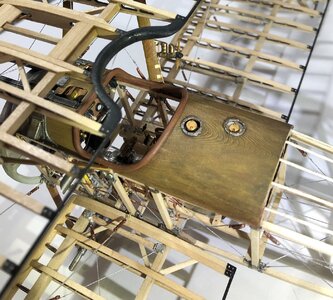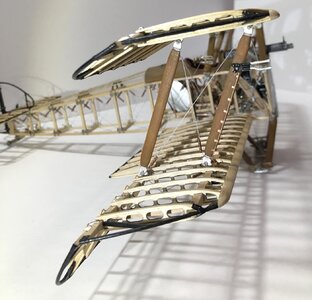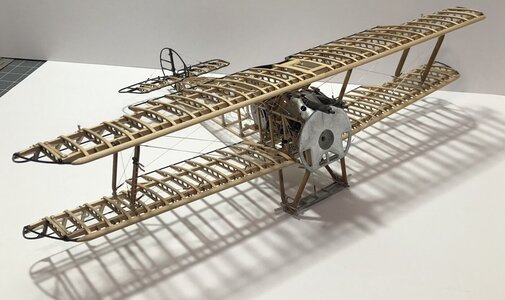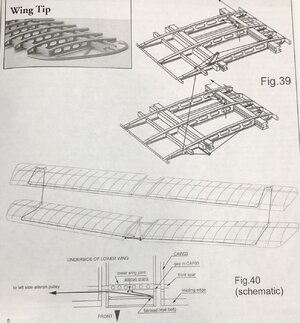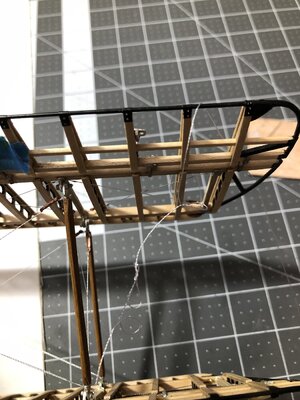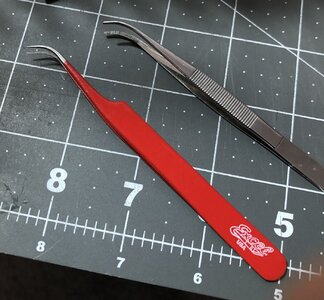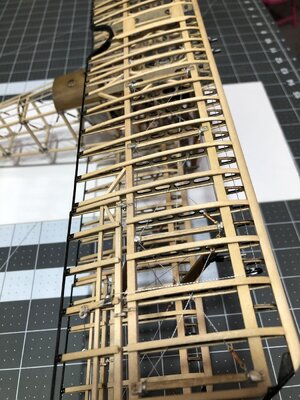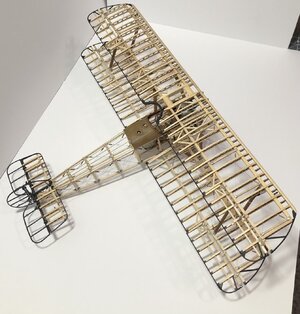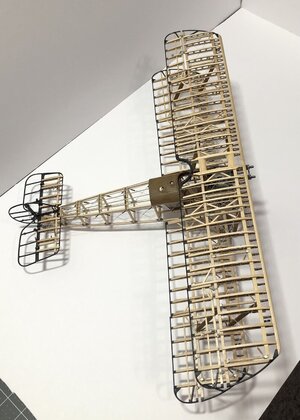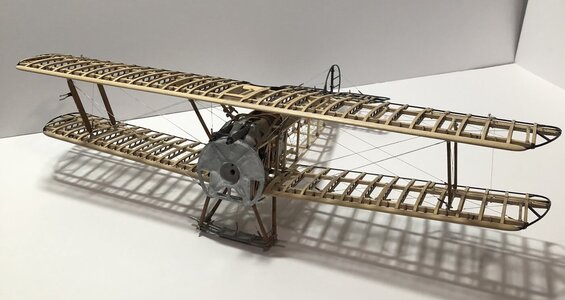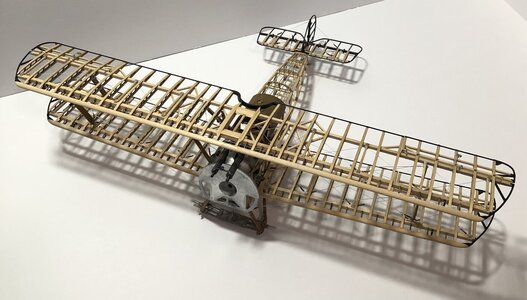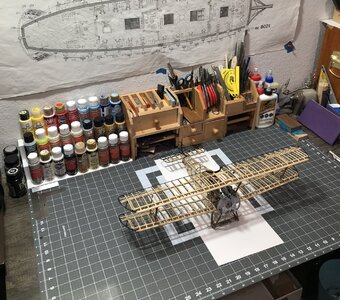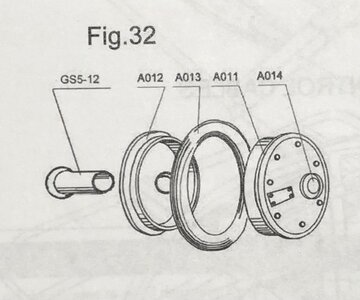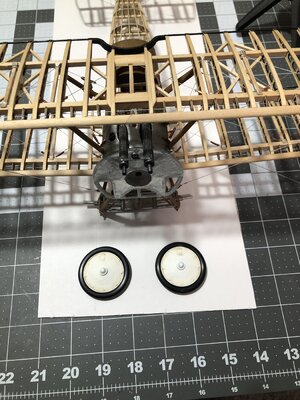Today I finished the tension cables for the airplane...the last turnbuckle has been used! 
The flying cables are doubled. These are the ones that go from the bottom of the fuselage to the top of the interplane struts. The landing cables are single, like all others. They are the cables that go from the top of the cabane struts to the bottom of the interplane struts.
Pictures…

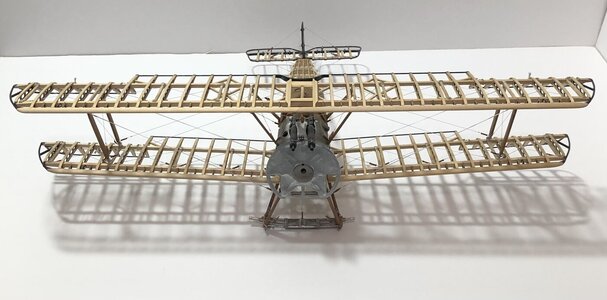
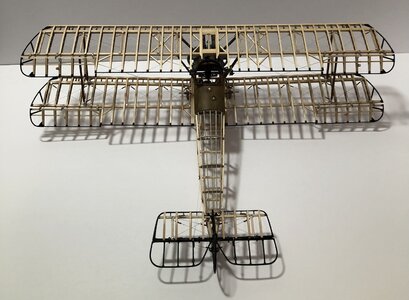
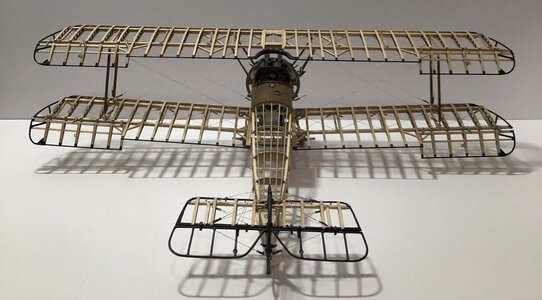
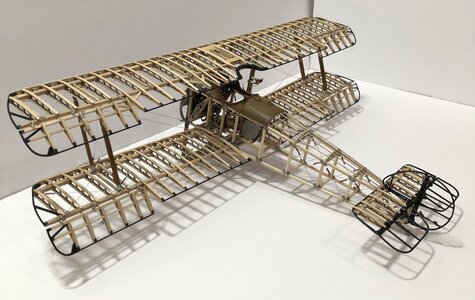
Next up is the pitot tube and tubing. Then the aileron cable. Which should be a challenge, which I will discuss further when the time comes.
Thank you for stopping in and taking a look.
The flying cables are doubled. These are the ones that go from the bottom of the fuselage to the top of the interplane struts. The landing cables are single, like all others. They are the cables that go from the top of the cabane struts to the bottom of the interplane struts.
Pictures…





Next up is the pitot tube and tubing. Then the aileron cable. Which should be a challenge, which I will discuss further when the time comes.
Thank you for stopping in and taking a look.
Last edited:



